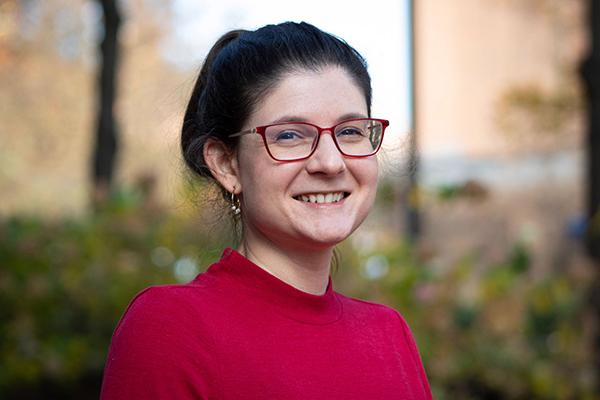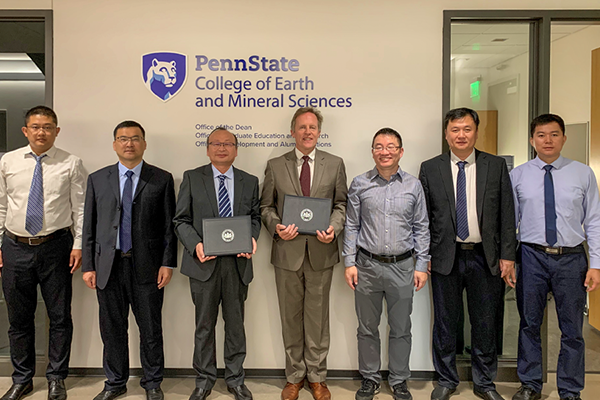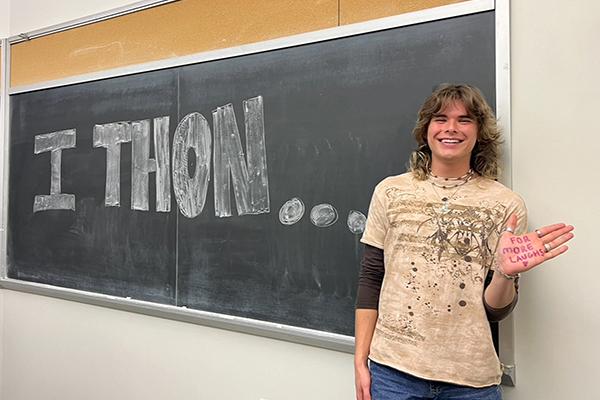The latest episode of “Growing Impact” delves into research using fiber optic cables to monitor environmental changes and seismic activity. Originally funded by a 2019 Penn State Institute of Energy and the Environment (IEE) seed grant, this project explores how fiber optic technology can detect hazards like flooding and sinkholes, with significant implications for geoscience and public safety.
The Penn State Department of Geography will host Laifang Li, assistant professor of meteorology and atmospheric science at Penn State, as part of its spring 2025 Coffee Hour lecture series. Li’s talk, "Changing Atmosphere Cools the Subpolar North Atlantic Throughout the Past Century," will explore why a region of the North Atlantic has been cooling for decades despite global warming.
Lauren Zarzar, professor of chemistry and of materials science and engineering at Penn State, has been named a recipient of the 2025 Presidential Early Career Award for Scientists and Engineers (PECASE), one of three Penn Staters to receive the honor, as announced by the White House on Jan. 14.
With an electric current and hydrogen peroxide, researchers at Penn State have developed a more efficient way to extract lithium, a key component in the batteries used in electric vehicles and portable electric devices, directly from ore found in the common mineral spodumene. The process could facilitate a 35.6% reduction in cost and a 75.3% reduction in CO2 emissions compared to traditional, less sustainable extraction methods, according to the team, led by Feifei Shi, assistant professor of energy engineering at Penn State.
Nicolas Choquette-Levy, assistant professor in the Penn State Department of Geosciences in the College of Earth and Mineral Sciences, has joined the faculty of the Institute of Energy and the Environment. His role will also include collaboration with the Penn State Climate Consortium, which strongly supported his appointment.
Photon-counting CT scanning is the next-generation of computer tomography diagnostics, providing precise, multi-color imaging to simultaneously track biological processes. The Laboratory for Materials in Medicine, led by Dipanjan Pan, the Dorothy Foehr Huck & J. Lloyd Huck Chair Professor in Nanomedicine and professor of materials science and engineering and of nuclear engineering at Penn State, is advancing the imaging capabilities by developing contrast agents to target specific molecules and processes that may reveal more about disease progression than traditional scans.
Maria Scalzi Wherley, learning designer and writer-in-residence at the John A. Dutton Institute for Teaching and Learning Excellence in the College of Earth and Mineral Sciences, was one of 16 Penn Staters recently recognized as part of the University's regular “We Are!” feature.
Penn State’s College of Earth and Mineral Sciences and Shandong University of Science and Technology in China have signed a memorandum of understanding (MOU) to pursue collaborative research, teaching and educational opportunities. The goal of the MOU is to strengthen and disseminate research outcomes in environmental and safety sciences and mining engineering.
If Luke Snyder could look back on themself just a few years ago, what they see would be unrecognizable.
Pamela Jagger, an applied political economist whose research focuses on the dynamics of poverty and environment interactions in low-income countries, will give the talk, “Pathways to Household Energy Transitions in Africa,” at noon on Wednesday, Feb. 5, in 157 Hosler Building on Penn State's University Park campus. Her talk is part of the spring Initiative for Energy and Environmental Economics and Policy (EEEPI) seminar series and is free and open to the public.










